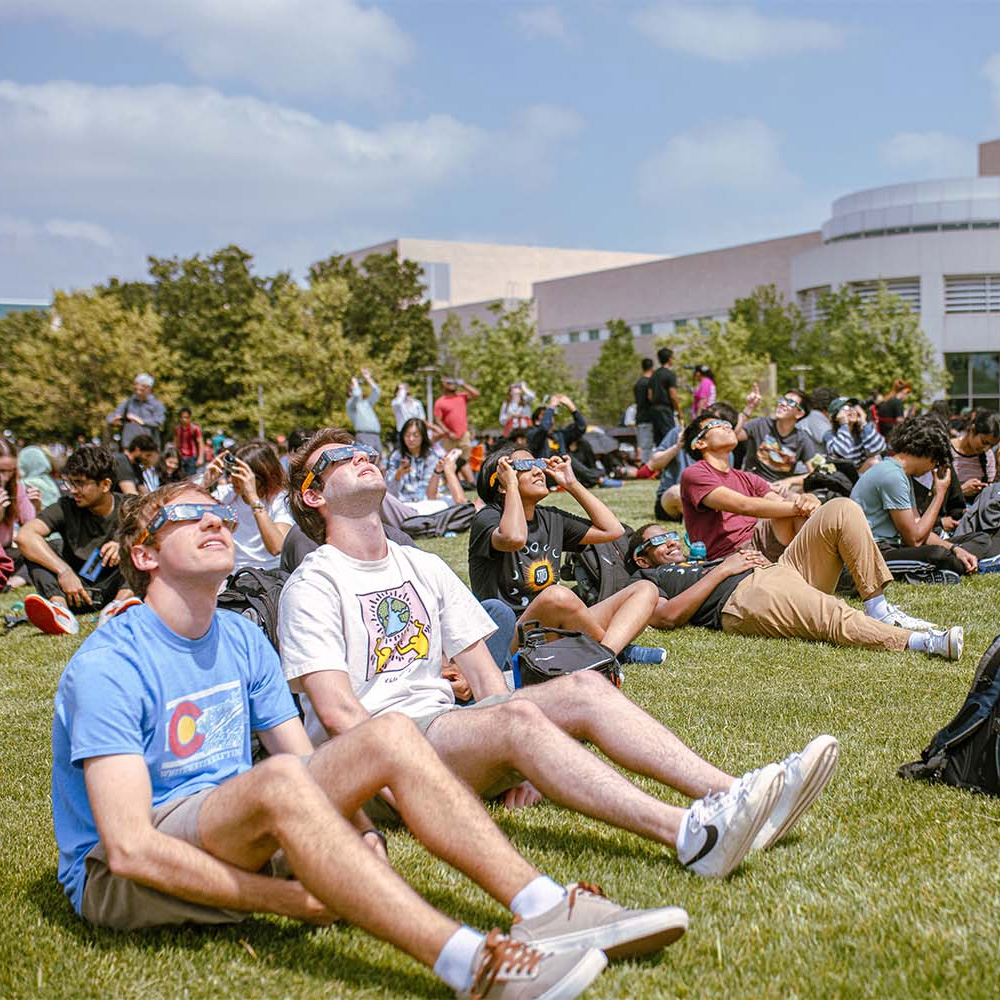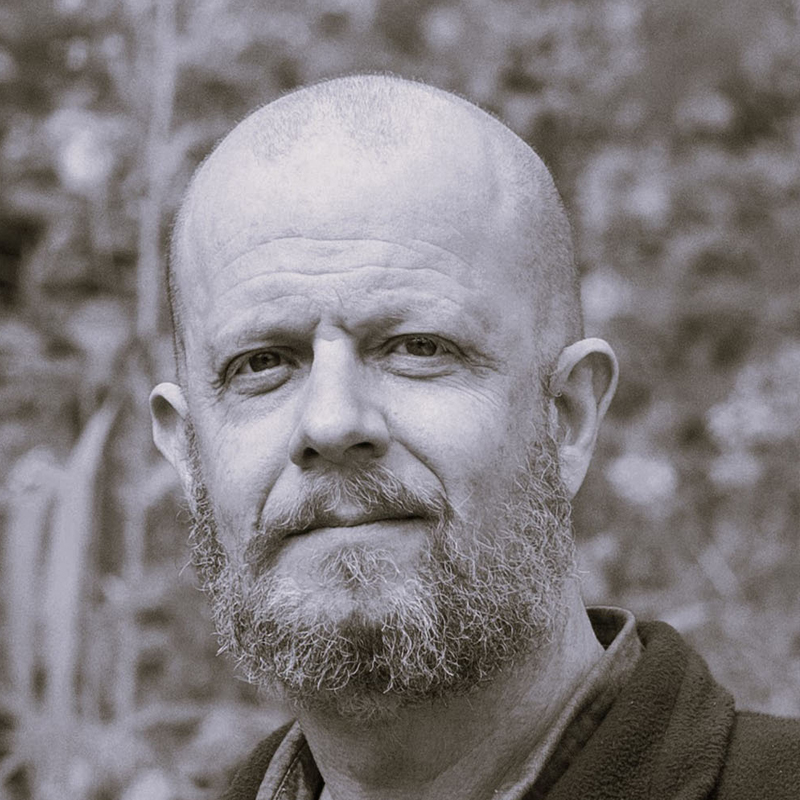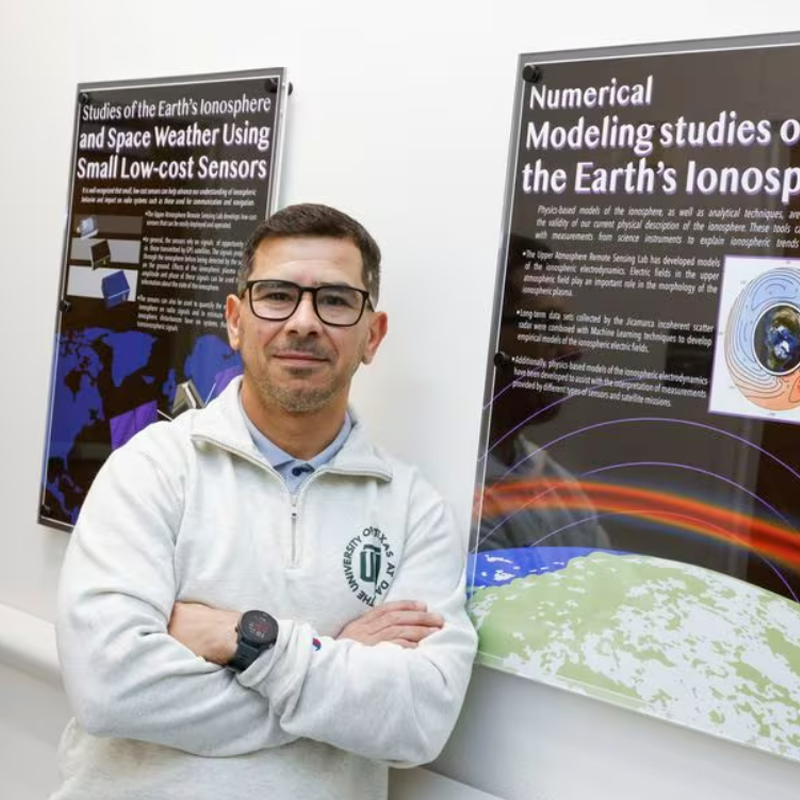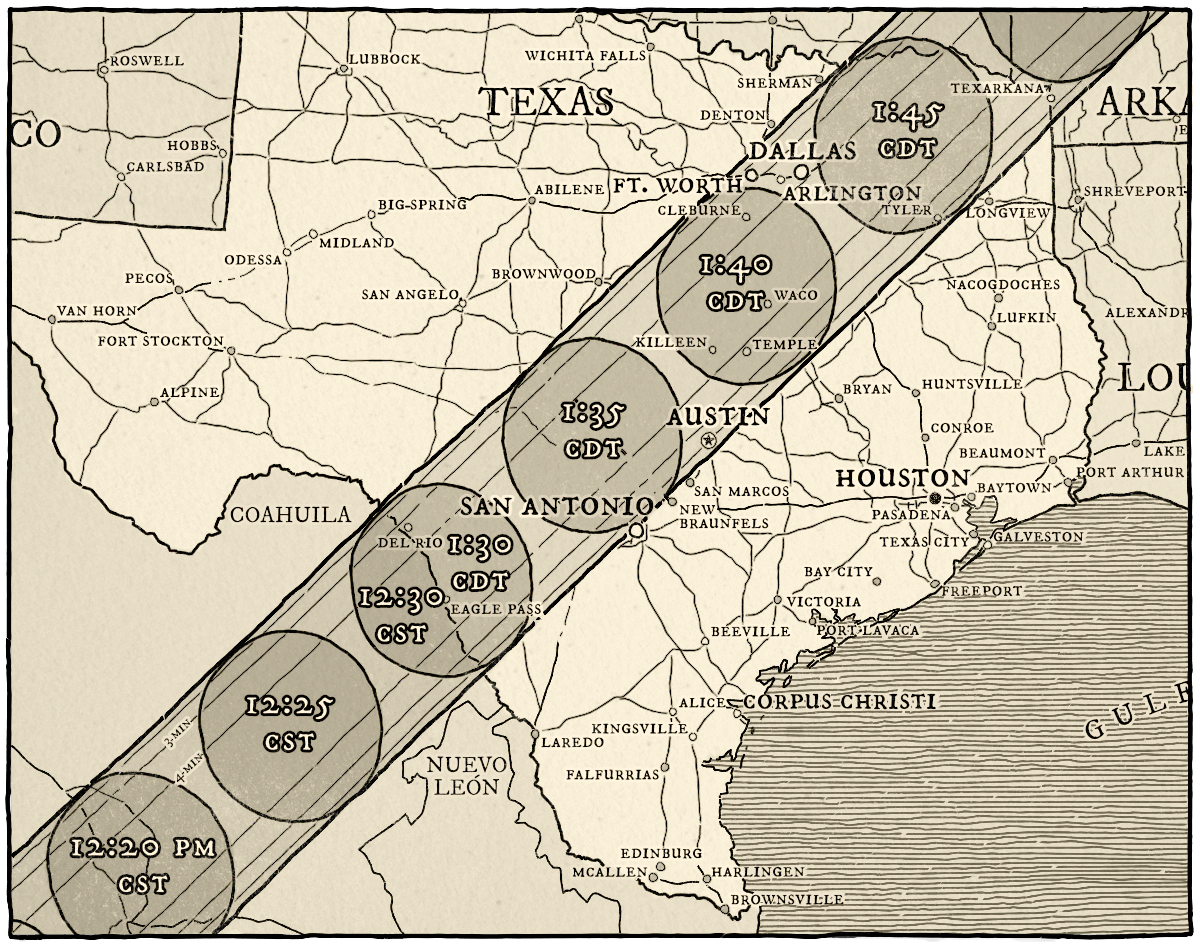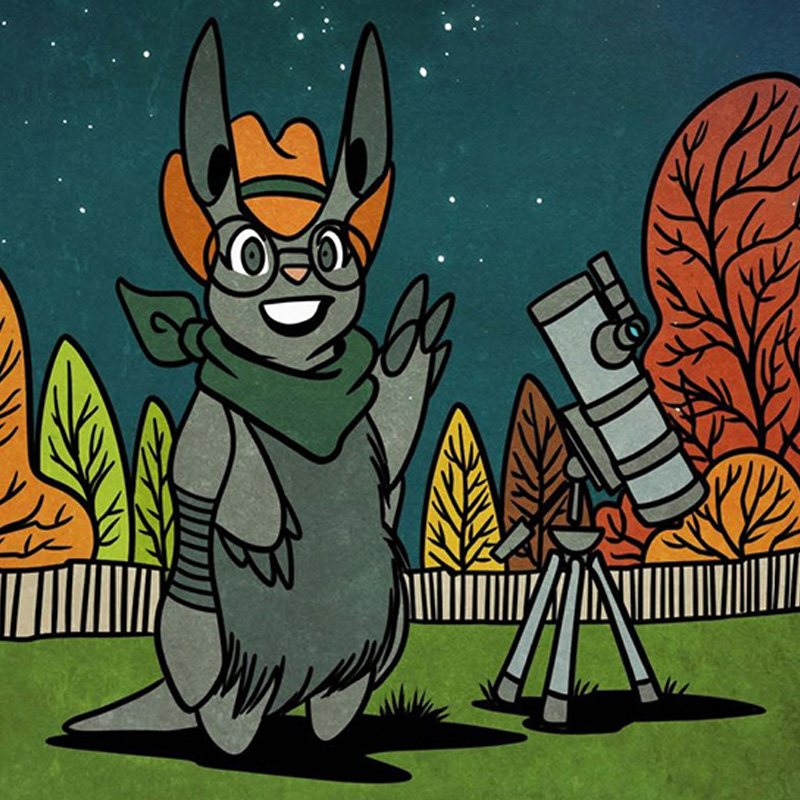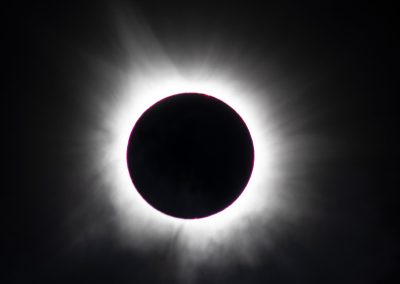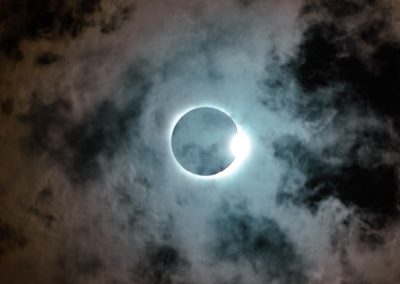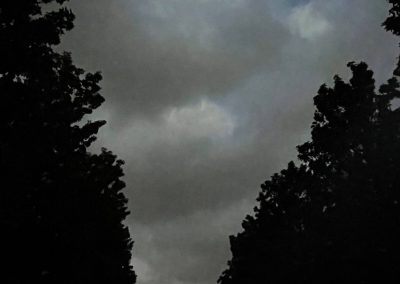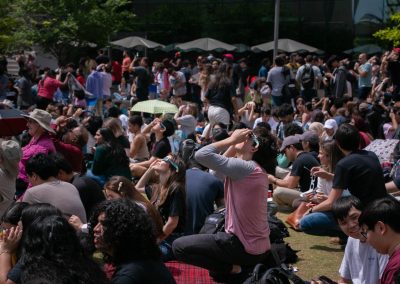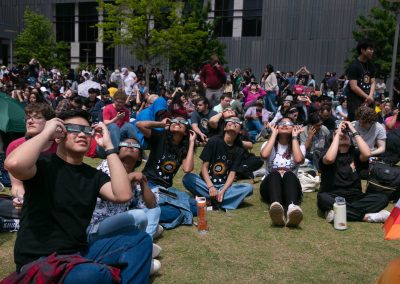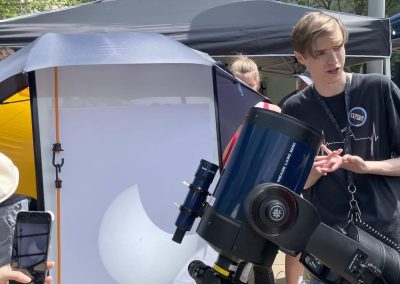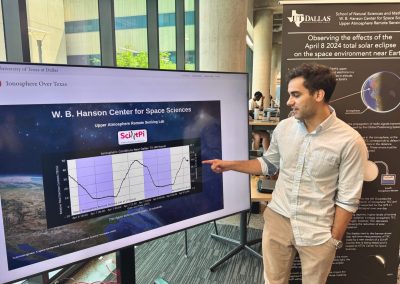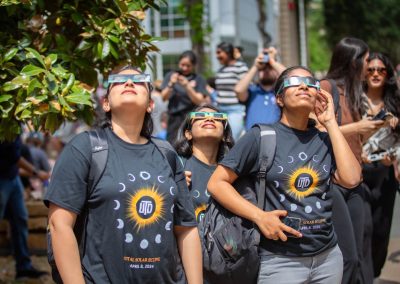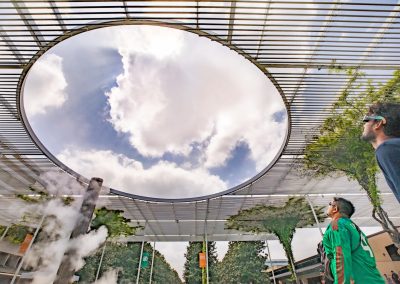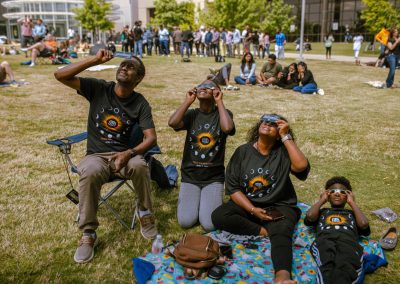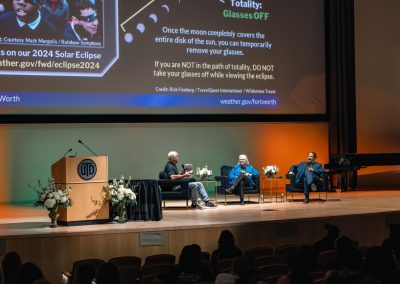April 8, 2024
Day(s)
:
Hour(s)
:
Minute(s)
:
Second(s)
On April 8, a rare celestial marvel — the solar eclipse — occurred above UT Dallas. Learn about the cosmic spectacle.
News & Events
Total Solar Eclipse Becomes Communal Comet Experience
UT Dallas News Center
Students, faculty, staff and visitors reveled in the spectacle’s darkness as day turned into night for more than three minutes across campus.
Space Scientists’ New Sensors Shine Spotlight on Sun-Earth Studies
UT Dallas News Center
The small, low-cost sensors, which surprisingly provided information about the sun recently, will collect data about the Earth’s upper atmosphere during the April 8 total solar eclipse.
UTD To Celebrate Solar Eclipse with Events Totally Made for Comets
UT Dallas News Center
UTD will have a front-row seat for a spectacle almost 150 years in the making for North Texas and will host activities designed to give the community a better view of the science in the skies.
Alum’s Artistic Vision Comes to Light in National Eclipse Project
UT DAllas News Center
Brian Fridge MFA’11 created a multimedia artwork for the April 8 total solar eclipse as part of a national effort to spotlight the rare celestial event.
Studying Eclipse Could Benefit Radio, GPS Devices
The Dallas Morning News
UT Dallas researchers will collect data during the eclipse to study a layer of the atmosphere that affects radio and GPS signal transmission.
Hidden
News Archive
Here Are the Next Total Solar Eclipses To Watch For — The Associated Press | April 9, 2024
During the Awe of Totality, Scientists Studied Our Planet’s Reactions — Science News | April 8, 2024
‘We Had Good Visibility’: How North Texas Scientists Studied the Total Solar Eclipse — The Dallas Morning News | April 8, 2024
How To Practice Eclipse Safety — NBC DFW | March 26, 2024
The 2024 Solar Eclipse: Perspectives on Safety, Science and Society — UT Dallas | March 26, 2024
Video: UT Dallas Planetary Scientist Debunks Solar Eclipse Myths — UT Dallas | March 18, 2024
Safety Should Be a Priority When Viewing the Total Solar Eclipse on April 8 — NBC 5, Dallas | March 11, 2024
Teaching the Teachers: Bringing the Solar Eclipse into the Classroom — UT Dallas Telescope Blog | March 6, 2024
Texas Educators Learn How To Teach the April Total Solar Eclipse — The Dallas Morning News | March 5, 2024
How To Make the Most of the Total Solar Eclipse — UTD Telescope Blog | Feb. 28, 2024
Brace Yourself for Traffic after 2024 Solar Eclipse in Dallas-Fort Worth — The Dallas Morning News | Feb. 23, 2024
A Total Solar Eclipse Will Be Visible in D-FW in April. What Causes It and How Rare Is It? — The Dallas Morning News | Dec. 6, 2023
UTD To Be Stellar Site for Rare Sight During Eclipse Season — UTD Telescope Blog | Sept. 18, 2023
UTD Events
Total Solar Eclipse Panel
No Comet Left Inside: UTD Community To Celebrate Total Solar Eclipse
April 8, 2024 | 10 a.m. | Map of Locations
Other Events
Eclipse Event at Perot Museum
Eclipse Event at Frontiers of Flight
April 8, 2024 | Noon – 3 p.m.
Information
past
Monday, April 8, 2024
The total solar eclipse started at 12:23 p.m., and reached its maximum in Richardson at 1:43 p.m. Totality lasted 3 minutes and 38 seconds. The event lasted 2 hours and 39 minutes and ended at 3:03 p.m. (Time and Date AS)
Saturday, Oct. 14, 2023
In Richardson, the approximately three-hour partial solar eclipse began at 10:23 a.m., reached its maximum at 11:52 a.m., and ended at 1:29 p.m. (Time and Date AS)
Resources
For Educators
ARI THE ASTRONOMER’S SOLAR ECLIPSE SAFETY COMIC BOOK
Produced for kids by UT Dallas science educators, the comic book is available for free in English or Spanish versions in several formats.
For News Media
Safety
Safety Information
Viewing any part of the bright sun through a camera lens, binoculars or a telescope without a special-purpose solar filter secured over the front of the optics will instantly cause severe eye injury.
Viewing an annular eclipse — like the one on Oct. 14 — without eye protection is never safe.
Except during the brief total phase of a total solar eclipse, when the moon completely blocks the sun’s bright face (totality), it is not safe to look directly at the sun without specialized eye protection for solar viewing.
During the total solar eclipse on April 8, 2024, people viewing in Richardson will experience totality for 3 minutes and 38 seconds. The instant the moon begins to move off the sun’s face, you must resume using safe viewing techniques.
How to View a Solar Eclipse Safely
Exploratorium details the safe ways you can view a solar eclipse — with pinhole projectors, solar viewing glasses and items you probably have in your home.
Solar Viewing Glasses
The American Astronomical Society approves these vendors of solar viewing glasses: Rainbow Symphony, American Paper Optics, Explore Scientific, Lunt Solar Systems and Flip’n Shades.
Solar Filters for Optics
The American Astronomical Society recommends several vendors for camera filters and sheets of filter material.
FAQs
What is a total solar eclipse?
A total solar eclipse occurs when the sun, Earth and moon line up exactly as the moon passes between the sun and the Earth. Because the apparent sizes of the moon and sun’s disks in the sky are nearly the same, the moon completely blocks the sun’s light, leaving only the outermost part of the sun’s atmosphere — the corona — visible. As an eclipse progresses, the shadow of the moon travels across a narrow swath of the Earth’s surface. Those in this shadow’s path — a region called the path of totality — experience darkness. The closer you are to the center of the path, the longer totality will last. During the April 8, 2024, total solar eclipse, the whole event will take about two and a half hours, but totality will only last about 4 minutes, depending on your location.
Safety first: If you want to view the sun during a total solar eclipse, you must wear protective solar eclipse glasses during the partial eclipse phases — you may safely take them off only during totality.
What is an annular eclipse?
Safety first: If you want to view the sun during an annular eclipse, you must wear protective solar eclipse glasses during the entire event.
What’s the difference between a total solar eclipse and a partial solar eclipse?
It’s all due to geometry and shadows. Objects illuminated by the sun — including the moon — cast two shadows. This is because the sun is not a point source of light — it takes up half a degree in the sky. The moon casts two cone-shaped shadows. For anyone inside the smaller, darker shadow, called the umbra, the sun will be completely blocked during a total solar eclipse. The second, larger shadow — called the penumbra — is also a cone. Anyone who is in the penumbral shadow will experience only a partial blockage of the sun by the moon.
A partial eclipse also can occur when the moon, sun and Earth don’t line up perfectly, but are close enough to alignment that the outer part of the moon’s shadow — the penumbra — falls on the Earth while the darkest shadow — the umbra — misses Earth. Anyone who is in the penumbral shadow will experience a partial blockage of the sun by the moon.
Safety first: If you want to view the sun during any partial eclipse, you must wear protective solar eclipse glasses the entire time.
Why don’t we have an eclipse every month?
How rare are solar eclipses?
What will the upcoming eclipses look like from my location?
What locations in the U.S. are in the path of annularity on Oct. 14, 2023?
What locations in the U.S. are in the path of totality on April 8, 2024?
What’s the difference between a solar and a lunar eclipse?
Solar eclipses, which occur only during the day, happen when the moon is between the sun and the Earth, and the moon’s shadow passes over the Earth.
A lunar eclipse occurs only at night, when the Earth is between the sun and moon. During a lunar eclipse, the Earth’s shadow falls on the moon.
For more information, watch this solar eclipse video.
What does a lunar eclipse look like?
Who can see a lunar eclipse?

© The University of Texas at Dallas
Richardson, Texas 75080-3021
Privacy Policy
